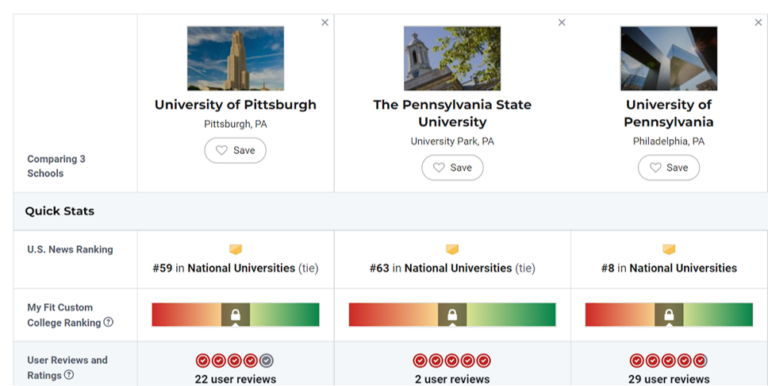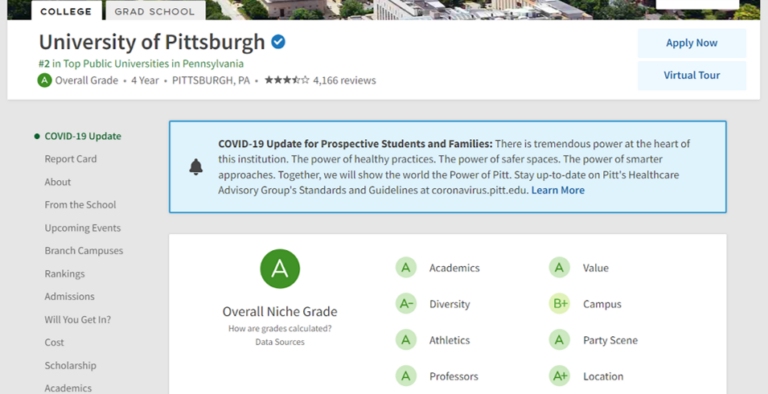“As a High School senior 25 years ago, I was given the privilege of having all of 15 minutes with my school counselor who “advised” me to either go to SUNY Binghamton and pay $13,400 for four years OR NYU and be in debt for $48,000 after I graduate*. I told her I’d apply to both colleges, then never got to speak to her again. Eventually, I was accepted into both and chose to attend NYU. To this day, I wonder if I should have gone elsewhere.
Nowadays, students and families have access to public information to conduct thorough research in choosing the right college. High school counselors also have gotten more knowledgeable about the process, but it’s imperative that students know where to look to create their best fit college list.”
-Sunghoon Kim, M.Ed.
*Tuition has ballooned to $40,800 and $212,200 for four years, respectively
Choosing your college is a big decision, one that requires thoughtful research and planning to find your best fit. Resources for researching and comparing schools are abundant nowadays, but so much information can be overwhelming if you aren’t sure how to navigate it and identify the most important factors. We’ve compiled our guidance and resources to help students and families through this process, so you end up with a list of potential schools that align with your academic goals, interests, and personality.
Where should we look for information?
The primary source will be the college’s website. Students and families will be able to find copious amounts of information here, broken down into programs and divisions. Take the time to research each college carefully, take notes on how they present themselves, and categorize them appropriately.
American University goes to great lengths to show that they are Undergraduate Research focused, with over 50% of first-year students in research, while Arizona State likes to emphasize school spirit as a core element of its campus.
For pure data, look for the particular college’s Common Data Set. These are often buried somewhere, but are highly informative. Google “XYZ College Common Data Set” then find the latest year for which this information is available. Information on acceptance rates, tuition cost, and early decision numbers will all be here. Here is an example of where to find University of Pittsburgh’s Common Data Set. Because these datasets are similar across schools, this is a great way to compare.
Finally, read the college’s Strategic Plan. This will help to gain a deep understanding of the school’s intent to improve, and the sort of student body they are trying to attract. Here is an example of Northwestern’s Strategic Plan. Can you determine if they are more regionally-focused or nationally focused? (Hint: Look at the headings) Strategic plans can also point to potential campus activities that may be of interest–for example, if a school emphasizes environmental sustainability in its strategic plan, it’s likely a good fit for someone interested in ecology, earth science, energy, and social justice. Student activities and campus initiatives will center around goals outlined in the strategic plan.
What factors should we consider?
A school’s rankings as compared to other colleges can be important, and offers a good starting point. However, rankings likely differ depending on where they’re coming from and what specific information is considered to make them. When looking at rankings, be sure to research across schools as a whole and within the majors or programs that are of interest to you. Whereas UNC Chapel Hill might be a perfect destination for COMPUTER SCIENCE, if you want to focus on global impact Georgetown may be a better fit.
Resources for College Rankings:
- US News is the most popular college ranking service. They release a list every year, and also provide rankings by field of study. Additionally, they offer online tools for directly comparing schools and have information on acceptance rates across colleges and programs. US News is useful for its convenience and availability, but their rankings are debatable and there are more authoritative sources out there, so take everything with a grain of salt.
- The Fiske Guide for Colleges, published annually, is one of the most well-respected sources for information on US colleges and universities. Edward Fiske served as the Education Editor for the New York Times for 17 years, and wrote this guide to help students and their families make more informed educational decisions.
- BigFuture by the College Board has a search platform where you can filter schools by type, majors offered, location, affordability, and more. They maintain data on a school’s acceptance rates, average tests scores, etc., which is useful in gauging your chances of admission.
- Niche scores colleges in a number of categories, providing a more holistic view of the school. Some scores are very useful such as diversity, value, professors, etc. and can round out your search with qualitative data. Others might be less important academically (please see: “party scene”), but can still be useful considerations! After all, you might be spending a number of years on this campus, and knowing the culture of the student body is important.


In addition to rankings, look for these notable pieces of data:
- Application specifics: Consider applying to a school “early decision” or “early action.” It’s important to know the difference between these plans versus regular decision cycles. Early decision entails a firm commitment, while early action allows for more flexibility – but both require submitting your application well ahead of the regular deadline with potential advantages in admissions. (Tulane accepted over 60% of this student body via Early Decision.) If you’re sure about your number one pick, applying early can increase your chances of acceptance.
- Acceptance rates: Consider school and your programs of interest. When compiling your final list of schools to apply to, choose a balance of “reach” (colleges with 30% of less acceptance rate), “target” (30%-70%) and “safety” (70%+) schools. Choose colleges that you will absolutely be thrilled to attend. This ensures you have options and aren’t left with rejections from top colleges without a fallback plan.
- Demonstrated Interest:. A way of measuring how excited an applicant is about a given school, many admissions departments track whether you’ve physically come to a campus visit, registered for information sessions, attended virtual tours, contacted the regional admissions rep, followed the school on social media, and engaged with the school’s marketing efforts as well as noting particular aspects of the college in your essays.
- Cost: Tuition rates will vary whether you’re an in-state or out-of-state student. Look for the average percentage of cost covered by financial aid. Top tier universities will usually cover 100% of need-based aid, while scholarships are awarded based on your initial application. Still, some others require an additional essay. If a school is a financial stretch for you, applying to as many scholarships as possible is a great way to make it more feasible. Make sure you understand the different types of financial aid so you’re prepared to make decisions when you get your aid offer letter. Enroll with College Aid Pro, Pittsburgh Prep’s official financial aid partner, to strategize and understand all cost considerations.
Of course, another important consideration is the atmosphere and feeling of a campus. Look for Youtube videos created by students to gather testimonials about the school. And, consider the social climate of the school. Sometimes state colleges are a bit harder to make friends at in the first semester, because many enrollees are local and already have friends on campus.
Other tips:
- While it’s important to read a school’s website carefully, don’t use this as your sole source of information! A college’s marketing efforts are going to make the school look
goodgreat and hide some of the more troubling aspects of their campus culture. It’s important to find external sources of information that assess the school with more honesty. - When you’re ready to start compiling colleges of interest, you can curate your list to make the application process easier down the road. Pittsburgh Prep utilizes its own college building software called GuidedPath that every enrollee has access to. Your high school may use an information system like SCOIR or Naviance that functions similarly. These systems communicate between high schools, students, and colleges, offering a centralized place to build your list of schools, upload transcripts, and prepare other application materials. Ask your high school guidance counselor if they use a system like this – it can be a very effective way to stay organized and centralize your college search.
- When building your list, make sure that at least half to three quarters of your choices are colleges where your test scores are above the middle 50% range and your unweighted GPA is above their average. There are no guarantees, but your excellent test score will show that you’re able to succeed academically at that college.
- Remember that when it comes time to select a school, the most important thing is what you want and what’s a good fit for your life. College is a crucial time for academic and personal development, and making a decision that serves your future is important.
Resources:
- Read our guide on how to search for colleges.
- Learn the difference between early decision and early action.
- Read more about demonstrated interest and how it’s tracked.
- Search for colleges by program using US News.
- The College board collects advice and guidance for finding your school, prepping for campus visits, and more.
- Hung up on financial aid? Read about how to appeal your aid letter.

